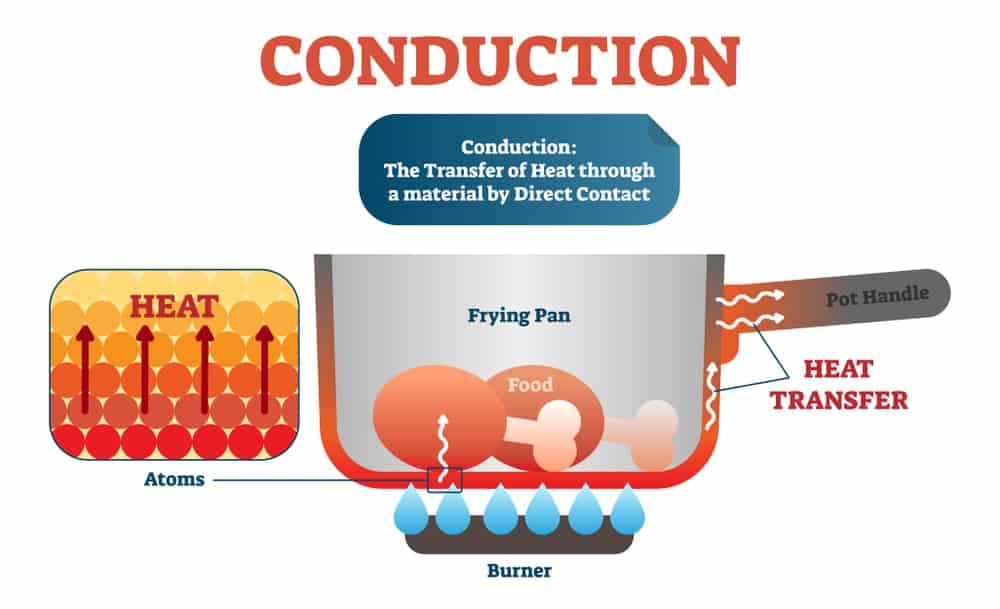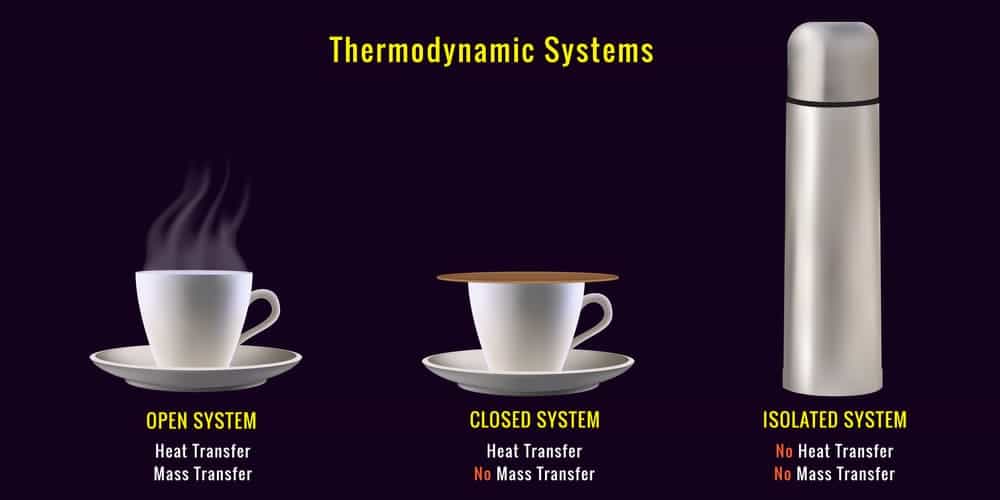Coffee, like many other soft beverages, is available in two forms: hot and iced. Have you ever wondered why a hot cup of coffee gets chilly within a short period of time?
Heat transport and absorption are described by three physical terms: heat conduction, convection, and radiation. Isn’t it a little perplexing?
So, what kind of heat transfer is a cup of coffee? How about a cup of hot tea? Read the article below if you wish to hear extensive and easy-to-understand explanations on this topic.
A Quick Overview Of Heat Transfer
Conduction is the transmission of heat energy by direct touch, whereas convection is the flow of heat through real motion of matter, and radiation is the transfer of energy through electromagnetic waves.
You’ll notice the following when you explain the three terms in a cup of coffee. When you hold a hot cup of coffee in your hand, heat is transmitted to your hand by conduction. Meanwhile, when a barista “steams” cold milk to make hot chocolate, this is called convection. Finally, when you microwave a cold cup of coffee, it is radiation.

Similarly, how is the heat from the hot coffee within the cup transported to the environment? The energy from the coffee and the cup is transferred to the surrounding air and the heating surface. The movement of heat from one site to another is referred to as heat conduction. Only energy is transmitted from hot water to cold water; no matter is moved from hot water to cold water.
What Kinds Of Heat Transfer Do You Think A Cup Of Coffee Will Experience?
The heat from coffee and cups is transferred to the environment. Heat is transferred from the hot coffee and heated cup to the ambient air. The decrease in coffee temperature indicates a decrease in the average kinetic energy of its particles. Coffee’s potency is dwindling.
Is a hot cup of coffee convection? The answer is yes. Convection is the most obvious mode of heat transmission in a cup of coffee. Convection is a natural phenomenon that happens when warmer air or liquid is trapped under a colder layer. In a cup of coffee, the top coffee gets cooled by evaporation, and because the colder is also heavier, gravity pushes it to the bottom. The hotter coffee underneath it rises to the top to take its place.

Specifically, convection is the transmission of heat through the movement of the item that is being heated. As the steam and air ascend, the heat exits the coffee cup. Convection is the movement of electric currents in a gas or liquid to transfer heat energy. (Some solids, like as sand, can also do this.)
Is Conduction Possible With A Cup Of Hot Coffee?
A hot cup of coffee also go through a process called conduction. The transfer of heat between substances in direct contact is known as conduction. The faster heat transfers, the better the conductor. When a substance is heated, the particles gather energy and vibrate more vigorously, which is known as conduction. When these molecules hit with surrounding particles, some of their energy is transferred to them. This process then continues, transferring energy from the heated end of the material to the colder end.

Hot coffee, for example, makes the cup hotter, and when you touch a hot cup of coffee, your hand will get hot as well, since the temperature of the coffee is greater than the temperature of the cup and your hand, thus heat is transmitted from the coffee to the cup, and from the cup to your hand.
Conduction of heat through the cup, followed by convection of hot air bound to the outside surface of the cup away from the cup’s surface, appears to be how the hot water in the cup is cooled.
Similarly, What Kind Of Heat Transfer Does A Cup Of Tea Go Through?
Conduction, convection, radiation, and evaporation all contribute to the loss of heat in a cup of hot tea. These reactions happen in the same manner as a hot cup of coffee does.
Why Does The Coffee Cup Lose Its Heat?
Your coffee will cool as the cup absorbs heat through conduction and loses it through convection, in addition to the heat lost through evaporation, which is dependent on the shape of the cup and the surface area of the coffee exposed to the air. The cup loses heat by convection when it first heats up.

The air that has come into touch with the hot cup rises and is replaced by fresher, cooler air. That’s how convection works. Furthermore, the coffee’s hot top surface warms the air above it, which rises and is replaced by cooler air from the edges, removing even more heat from the coffee.
What Is An Example Of An Excellent Heat Transfer Application?
When you buy a hot cup of coffee at your local coffee shop, you may see a nice example of heat transmission in action. By transmitting electricity, hot coffee warms paper cups. Many cafés include a layer of cardboard insulation to prevent your fingertips from burns because cups have very little insulation.
In A Coffee Roaster, How Is Heat Transferred?
The ideal approach to do so is to use a sophisticated combination of thermal conduction and thermal radiation with the least amount of air feasible. A good roaster can transmit heat by contact – metal to the surface of the beans – without the need of hot air blowers or other equipment if the thermodynamics are correct.
Is Convection Or Conduction Less Efficient For Heat Transfer?
Because of the air spaces, heat must be transferred by convection, which is less effective than conduction. There is substantially less heat transmission through conduction when just the ridges of the holder touch the hot cup. The takeout coffee cup usually comes with a plastic lid. This is mostly to keep coffee from spilling when walking or driving.
Final Thought
I hope you’ve gained a better grasp of heat transfer in coffee from this post. Once you’ve understood the idea of what kind of heat transfer is a cup of coffee, try different ways to make your coffee cup cool rapidly or stay warm longer, depending on your needs. I wish you a nice cup of coffee. Don’t forget to keep an eye on my next posts.
